We all love cheese, well probably not all, but yes we love cheese. However, only a few people have an idea how cheese is made. Some will even say it’s obtained just like meat. They may be right now that an animal will be involved but the difference here is that you wouldn’t have to slaughter it.
With cheese as a major ingredient in your recipes, you definitely need to know how to make the best cheese. The secret behind the best cheese is having the best cheese cloth and top notch cheese making skills. Well, don’t worry if you have no cheesecloth in your pastry. You can always use cheesecloth alternatives that are equally as reliable. Let’s focus on the substitution for cheesecloth that wont disappoint.
What Is A Cheese Cloth?
A cheese cloth is a lightweight, gauzy cotton fabric that has tiny holes that allow air to freely flow through. Normally, the cheese cloth will be available in six or seven grades that range from open to extra fine weave. These cheesecloth grades are determined and distinguished by the number of threads per square inch.
Outstanding Characteristics/Properties
- Loosely woven cotton (natural)
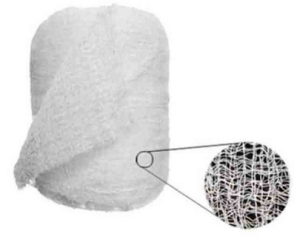
- Gauze quality
- Unfinished edge
- Lightweight
- No impurities
- Doesn’t fall off when wet
- Doesn’t flavor the food
Primary Uses Of Cheesecloth
There is a wide range of uses attributed to this special piece of fabric. These include liquid straining in culinary activities, draining sauce and soups, covering tobacco plants, wrapping tea bags and cheese curd draining.
The finished pieces may also be used as bandages, surgical gauze, dust cloth, food wrappers, hat lining, fly nets or curtains.
In some instances the cloth has also been used as a table cloth. It also comes in handy when polishing surfaces and craftsmen have used it for decades to strain vanishes, paints and polish surfaces to achieve a fine and smoother finish.
How Do You Use A Cheese Cloth To Make Cheese?
Cheese cloth is specifically designed to make cheese and thus the name. In the cheese making process, cheese makers realized the need to protect their cheese to avoid the losses associated with poor ventilation in the aging process. They thus invented a piece of cloth that would allow air to flow freely allowing cheese to age appropriately.
The cheese cloth is wrapped around the cheese as it ages and is commonly used to make cheddar cheese. The fabric comes in handy in draining the whey (liquid) from cheese curds. This is quite vital as too much whey in the curds prevents cheese from aging and shaping into the desired wheels of cheese.
Cheesecloth is known to have loose weave. This makes it perfect for lining cheese molds. The lining goes a long way in wicking whey thus draining the molds.
Hard cheese has low moisture content. This means that it will be easy to serve it in slices, grate it or even use it in shavings. Such hard cheeses include Colby, cheddar, parmesan, gouda and Swiss.
Cheesecloth may be used for cheese bandaging. This is a cheese aging process that involves air drying. The cloth protects the cheese from unfriendly bacteria and mold development. For excellent results, a fat such as butter or lard is rubbed over the cheese cloth.
6 Reliable Cheese Cloth Alternatives
Cheesecloth alternatives range from cloths to sieves. There’s a wide range of items that can substitute cheesecloth in the cheese making process. Though the result may be a little different, the cheesecloth substitutes will come in handy if you need to make cheese but do not have cheesecloth in your pantry. Some of the common cheese cloth alternatives include;
1. Flour Sack Cloths
These are thin cotton towels made of a loose weave. In comparison to the cheese cloth, flour sack cloths tend to have tighter weave but are looser than your average dish towels.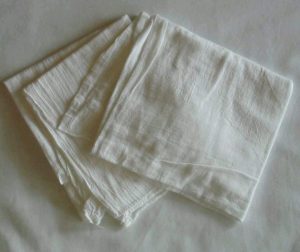
2. Fine-Mesh Bags
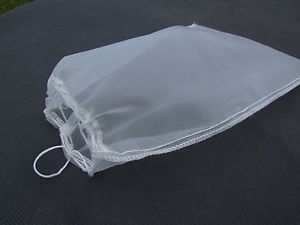 Well, these may be popular with nut and grain milk production. However, that doesn’t stop you from using them to make your homemade cheese.
Well, these may be popular with nut and grain milk production. However, that doesn’t stop you from using them to make your homemade cheese.
Just as they are used in making of almond milk or local beer, you can use the fine-mesh bags to play the role of a cheese cloth. This is because they are made of fine nylon and come in different shapes and sizes.
One of the major benefits of using these bags is that they are machine washable and wont stretch over time.
3. Cotton Fabric
 Cotton is a material that will give you all sort of finishes and almost every piece of cloth made from cotton may help you make your cheese if you cannot access your cheesecloth. You can either use a pillow case, diaper cloth, jelly bag or even a cloth napkin.
Cotton is a material that will give you all sort of finishes and almost every piece of cloth made from cotton may help you make your cheese if you cannot access your cheesecloth. You can either use a pillow case, diaper cloth, jelly bag or even a cloth napkin.
Provided that they are clean and well maintained these pieces of cotton will give you excellent quality cheese.
4. Muslin
Muslin is a plain weave fabric mainly made from cotton. It is available in different weights. It may range from course sheets to delicate sheers. The fabric was traditionally used in dressmaking, photography, early aviation, shellac polishing and culinary.
In the cheese making process, muslin serves as the sieve or filter. It prevents sediments (curds) from entering the decanter. The curd which is then free from whey can be used to make cheese.
5. Fine Wire Sieve
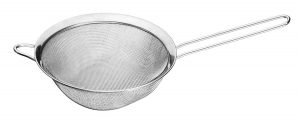
The main purpose of the cheese cloth in the cheese making process is straining and a wire sieve may as well do that for you. Though the wire sieve may not be as efficient as the cheese cloth is in catching the fine particles, it will still help you in achieving good quality cheese.
It may however fail to give you the desired results if you are looking forward to perfectly clear jelly.

6. Pantyhose
Funny as it may sound, pantyhose comes in handy in cheese making. A pair of clean pantyhose stretched over a bowl will act as a perfect strainer. Pantyhose has been used in the storage of herbs and you can be sure that it will also give excellent results when it comes to cheese.
Conclusion
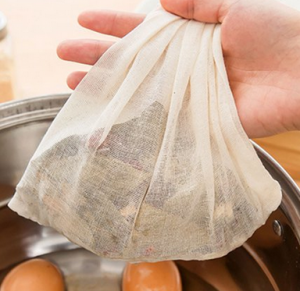 We know there are numerous ways of straining cheese at home but you will come to an agreement with us when we say that using cheesecloth is one of the easiest and most efficient methods.
We know there are numerous ways of straining cheese at home but you will come to an agreement with us when we say that using cheesecloth is one of the easiest and most efficient methods.
The quality of the fabric will determine your results and it’s always good going for the best quality cheesecloth. However, if you have a tight budget, do not worry as there are cheap cheesecloth Substitutes that will work out just fine. Have fun straining your cheese at home and exploring the other options cheesecloth offers.
